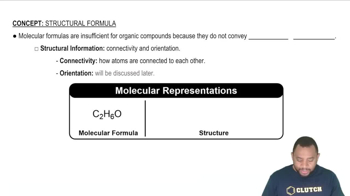Textbook Question
What is the Lewis symbol for each of the following atoms or ions: c. Sn2+
 Verified step by step guidance
Verified step by step guidance



What is the Lewis symbol for each of the following atoms or ions: c. Sn2+
(a) Using Lewis symbols, make a sketch of the reaction between magnesium and oxygen atoms to give the ionic substance MgO
Predict the chemical formula of the ionic compound formed between the following pairs of elements: (d) Mg and N
Which ionic compound is expected to form from combining the following pairs of elements? c. lithium and nitrogen
Which ionic compound is expected to form from combining the following pairs of elements? (d) aluminum and oxygen.